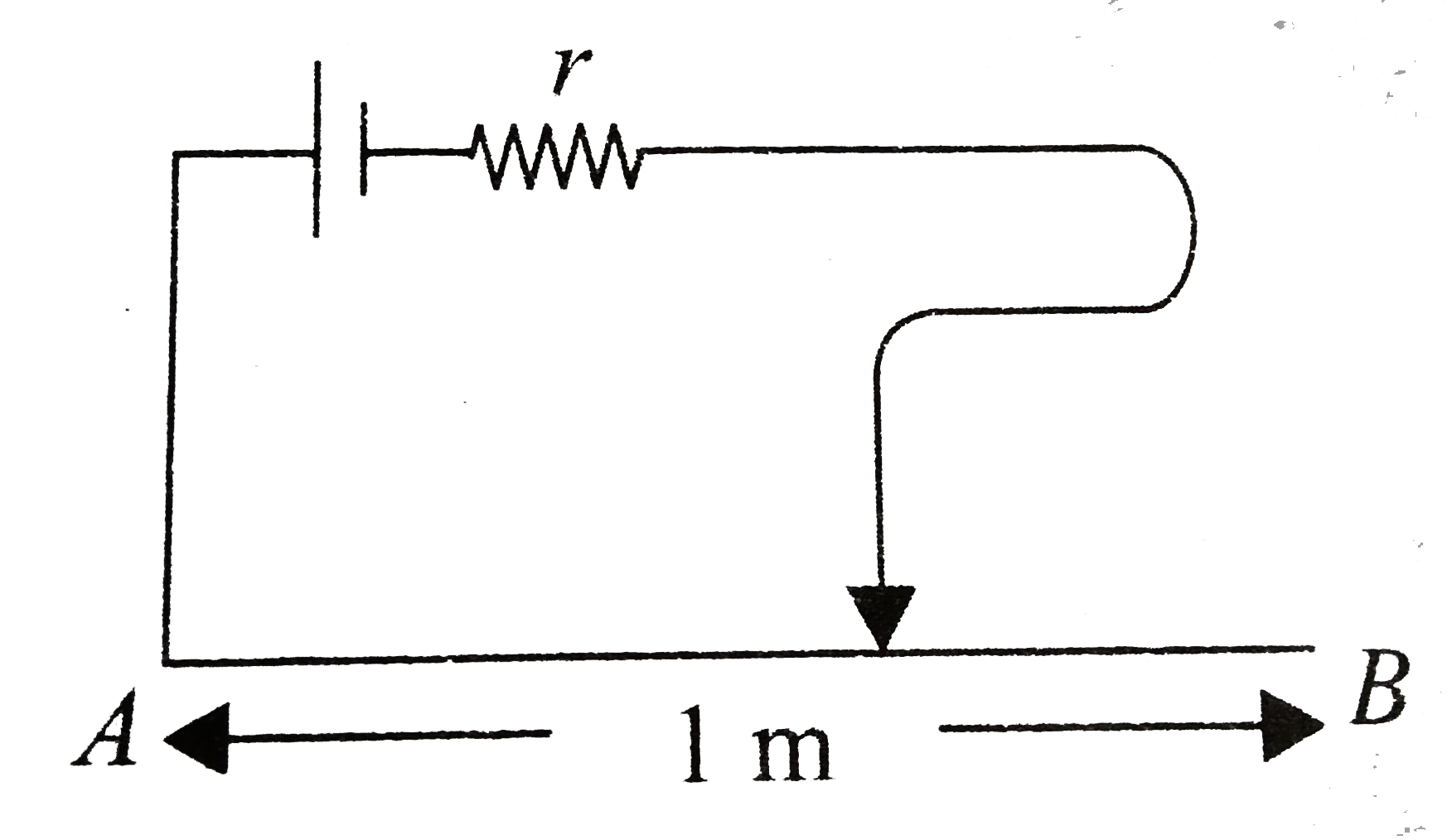A : The potentiometer wire should have uniform cross sectional area.
R : On the pottentiometer wire the jockey is gently tocuhed , not pressed hard.
If both Assertion & Reason are true and the reason is the correct explanation of the assertion , then mark
If both Assertion & Reason are true but the reason is not the correct explanation of the assertion then mark.
If Assertion is ture statement but Reason is false , then mark
If both Assertion and Reason are false statements then mark.
The correct Answer is:B
To solve the question regarding the assertion and reason related to the potentiometer wire, we will analyze both statements step by step.
Step 1: Understanding the Assertion
Assertion (A): The potentiometer wire should have a uniform cross-sectional area.
- Explanation: A potentiometer wire is used to measure potential differences (voltage) accurately. For the wire to provide consistent and reliable measurements, it is essential that the wire has a uniform cross-sectional area. If the cross-sectional area varies, the resistance of different segments of the wire will also vary, leading to inconsistent voltage readings along the wire.
Step 2: Understanding the Reason
Reason (R): On the potentiometer wire, the jockey is gently touched, not pressed hard.
- Explanation: The jockey is the contact point used to measure the potential difference along the potentiometer wire. It is important to touch the wire gently rather than pressing hard because pressing hard can deform the wire or create a point of contact that alters the resistance at that point. This can lead to inaccurate measurements. By gently touching the wire, we ensure that the resistance remains constant and does not change due to deformation.
Step 3: Analyzing the Relationship Between Assertion and Reason
- Both the assertion and reason are correct. The assertion is correct because a uniform cross-sectional area is necessary for consistent resistance along the wire. The reason is also correct because touching the jockey gently ensures that the resistance at the contact point does not change, which is crucial for accurate measurements.
Conclusion
Since both the assertion and reason are correct, but the reason does not explain the assertion directly, the correct answer is that both statements are true, but the reason is not a valid explanation for the assertion.
Final Answer
Both the assertion and reason are correct, but the reason does not explain the assertion.
---
Assertion (A): The potentiometer wire should have a uniform cross-sectional area.
Reason (R): On the potentiometer wire, the jockey is gently touched, not pressed hard.
- Both the assertion and reason are correct. The assertion is correct because a uniform cross-sectional area is necessary for consistent resistance along the wire. The reason is also correct because touching the jockey gently ensures that the resistance at the contact point does not change, which is crucial for accurate measurements.
Since both the assertion and reason are correct, but the reason does not explain the assertion directly, the correct answer is that both statements are true, but the reason is not a valid explanation for the assertion.
Both the assertion and reason are correct, but the reason does not explain the assertion.
Similar Questions
Knowledge Check
A current of 0.01 A flows through a potentiometer wire of cross section area 10−6m2. If the specific resistance of the potentiometer wire is 10−7 ohm-m, then the potential gradient will be
A10−1V/mB10−3V/mC10−2V/mD0.5×10−2V/mIn the following circuit, resistance of potentiometer wire is 100Ω. Power consumption in potentiometer wire is same when jockey is placed at 10 cm from end A or end B. Internal resistance of cell (r ) is
 A30ΩB6ΩC60ΩD3Ω
A30ΩB6ΩC60ΩD3ΩStatement I: The wire of a potentioment should be of uniform area of cross section.
Statement II: It satisfies the requirement of the principle of a potentiometer.AStatement 1 is true, Statement 2is True , Statement 2 is correct explanation for Statement 1.BStatement 1 is True, Statement 2 is True, Statement 2 is NOT a correct explantion for Statement 1.CStatement 1 is True, Statement 2 is False.DStatement 1 is False, Satement 2 is True.
Why should the area of cross-section of the meter-bridge wire be uniform ? Explian
View SolutionWhat should be the properties of the material for the selection of potentiometer wire ?
View SolutionWhy should the area of cross-section of the meter-bridge wire be uniform ? Explian
View SolutionAs is the cross sectional area and ρ is the specific resistance of a potentiometer wire. If I is the current passing through the potentiometer wire, then the potential gradient along the length of the wire is given by
View SolutionIf the resistivity of a potentiometer wire be ρ and area of cross-section be A , then what will be potential gradient along the wire
View Solution
